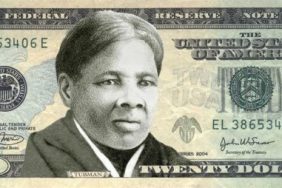Thomas Jefferson (1743 – 1846), the nation’s third president, was certainly one of the most significant – if not the most significant – figure in this Nation’s founding. He is often cited as the principle author of the Declaration of Independence, and many of his ideas that informed the central ethos of America’s founding politic. He also famously authored a version of The New Testament with all references to Christ’s divinity carefully cut out with a razor, exposing the Christian philosophy in its purest form. The Jefferson Bible was famously given to politicians for over a century. Maybe that’s what some people mean when they say the nation was founded on Christian principles.
So how was it that George Washington was granted the privilege of having his portrait emblazoned across the $1 bill, and Jefferson was stuck on the much lower circulated $2 bill?
Check Out: Get Presidential with Jefferson’s Bourbon
Jefferson’s appearance on the $2 bill goes back to when American currency was a little more complicated. There was a time, after the Civil War, when there were different types of paper money with named like silver certificates, legal tender notes, United States notes, treasury notes, and treasury coin notes (today, technically, America’s paper money is called a Federal Reserve Note). Paper money wasn’t always the standard in America, as it was flimsy and easily reproducable by enterprising counterfeiters.
The first version of the $2 bill (or legal tender note), first released in 1862 featured a portrait of Alexander Hamilton, the co-writer of The Federalist Papers, but a portrait of Jefferson came to replace it as early as 1869. That same portrait is the one that’s been redesigned over the years, and is very similar to the one we know today. The money we use today, by the way, didn’t become the size it did until 1928. Before that, most paper money was larger, and the different denominations were different sizes. From Small changes were made in the intervening decades, and the denomination was actually discontinued for a decade. The 2 was brought back for America’s bicentennial, and settled on its current design in 1976.

Wikimedia Commons
Today, the $2 bill is the rarest of in-use American currencies, and it has, as a result acquired a kind of myth. Only the cool kids in elementary school had one in their wallet, and they would never, ever spend it. The rumors were that a $2 bill was so rare that it was actually worth more than $2. Usually it was valued (by elementary school rumor) at about $2.10. It was only ever worth $2. Collectors of coins and currency value them as prizes, but they are only in low circulation. Some hipsters gather them and pay with them. Steve Wozniak is said to carry 2’s on a special tear-off booklet.
To this day, you can get uncut sheets of the bills from various online sources and from mints.
The notion that the $2 bill is somehow a “lesser” or “uncommon” currency, then, is only a recent one that has been embellished his its low circulation and rarity. The actual demand of $2 bills is simply not very high, so mints don’t print them a lot. When Jefferson was chosen to appear on the bill, $2 was a more common amount of money, and the third president was, hence, more commonly seen. So while it may seem, today, like he’s been swept to the side, Jefferson was granted a great honor.
Besides, not very many people get their faces on money. It’s an honor no matter what the denomination.
Top Image: Public Domain
Witney Seibold is a contributor to the CraveOnline Film Channel, and the co-host of The B-Movies Podcast. He also contributes to Legion of Leia and to Blumhouse. You can follow him on “The Twitter” at @WitneySeibold, where he is slowly losing his mind.






